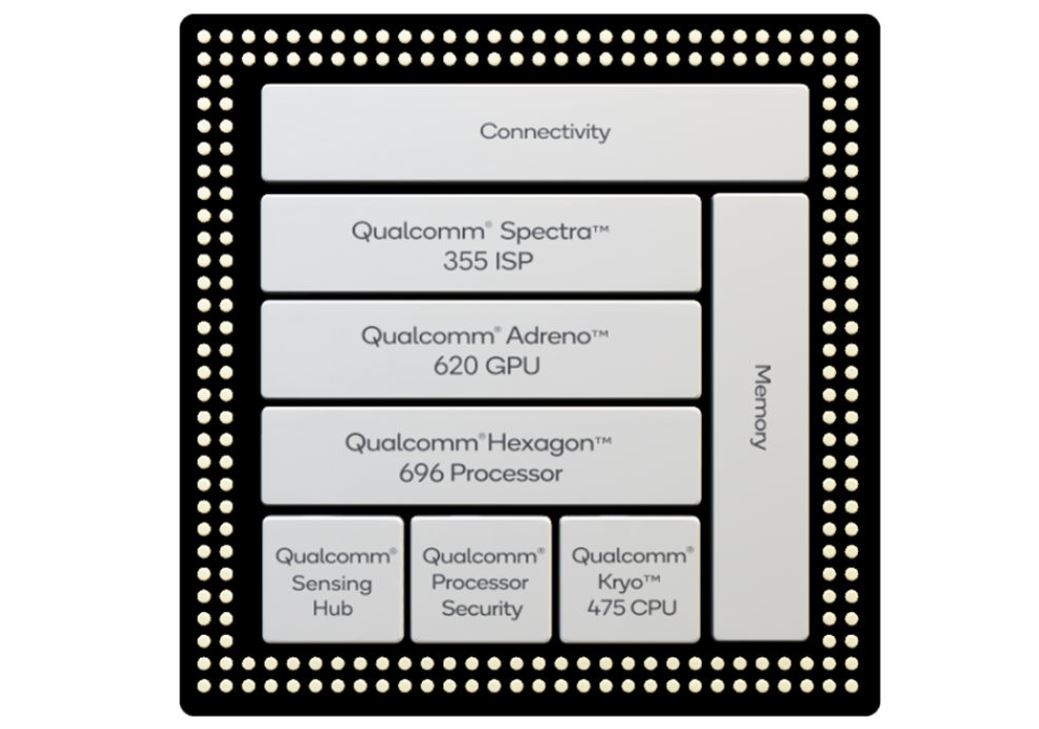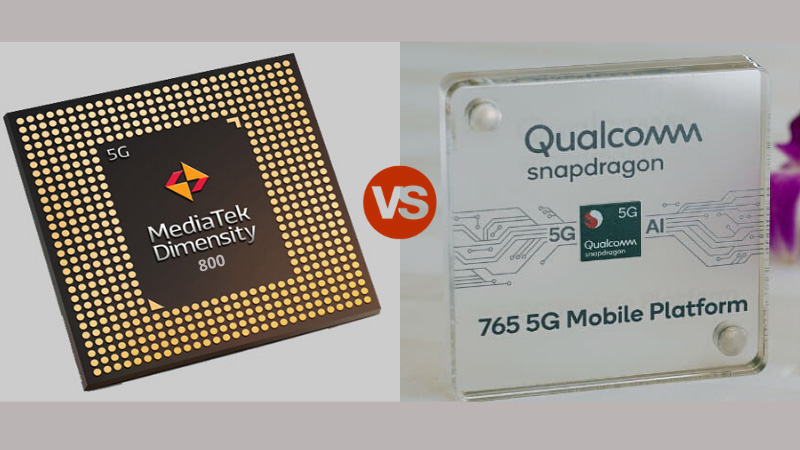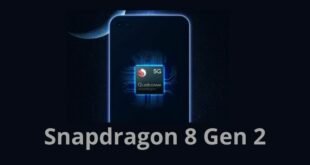Based in Taiwan, MediaTek is an SoC manufacturing company known primarily for its mid-range offerings. In terms of mobile processors, Qualcomm leads the category by mass-producing SoCs for every budget smartphone out there. Back in early 2018 and 2019, Mediatek launched two mid-range segments, SoCs, known as Helio P and Helio G. But going into 2020, things are changing as far as the capacity of MediaTek-developed SoCs is concerned. Just recently, MediaTek launched a flagship-grade SoC by the name Dimensity 1000. Besides having a top-notch hardware interface, the dimensity series from MediaTek is an SoC that allows for 5G connectivity. This is MediaTek’s answer to Qualcomm’s snapdragon 865 chip. Even though it’s not on par with the SD 865, it is good to see some competition in this category. Now, Qualcomm has launched another 5G-enabled SoC by the name Snapdragon 765G. Following that, MediaTek just launched the Dimensity 800. Just like the SD 765, the dimensity 800 is a 5G compatible chip for mid-range devices. So, in this article, let’s take a look at their differences and what these new mid-range 5G processors have to offer.
MediaTek Dimensity 800 vs Snapdragon 765G
| SoC | Dimensity 800 | Snapdragon 765G |
| Process | 7nm | 7nm |
| CPU | 4x Cortex A76 @ 2.0GHz 4x Cortex A55 @ 2.0GHz | 1x Kryo 475 (A76) @ 2.4GHz 1x Kryo 475 (A76) @ 2.2GHz 6x (A55) @ 1.8GHz |
| GPU | Mali-G57 MP4 MediaTek HyperEngine | Adreno 620 Select Snapdragon Elite Gaming Features |
| ISP | MediaTek's ISP 64MP 32MP+16MP | Qualcomm Spectra 355 192MP Dual: 22MP ZSL |
| AI | APU 3.0 2.5 TOPS | Hexagon 696 5.5 TOPS |
| Modem | MediaTek’s Integrated Modem | Integrated X52 Modem |
| Refresh Rate | Full HD+ displays up to 90Hz | Full HD+ displays up to 120Hz |
Manufacturing Process:
Both Dimensity 800 and Snapdragon 765G are built on a 7nm process. So, we get a 7 nm node with these two top-tier mid-range chips. It means both SoCs will be powered efficiently. So whether you are buying flagship or mid-range chipsets for your next 5G phone, you will always get an incredible experience.
Connectivity:
One of the key aspects of the Dimensity 800 processor is that it comes with 5G connectivity by virtue of an integrated 5G modem onto the chip. Much like the Snapdragon 765G, it will be more efficient than the 5G processors that come with a discrete 5G modem specification. They don’t have a 5G modem built onto the chip; rather, they have both components separate from one another. This is not considered efficient as compared to an SoC that has an integrated modem and chip configuration.
In terms of support in the Dimensity 800, we have 5G with two carrier aggregation, which is considerably considered better in terms of coverage than the single carrier aggregation. It supports both standalone and non-standalone sub 6 GHz networks. It also supports 2G/3G/4G as a multi-mode feature depending on the network and coverage, as all countries do not have 5G working everywhere yet. We also have support for Dynamic Spectrum Sharing and Voice Over New Radio.
On the other hand, Snapdragon 765G’s integrated X52 4G LTE/ 5G modem also supports mmWave, sub-6, NSA, SA TDD, FDD, and Dynamic Spectrum Sharing for truly global coverage.
As both chipsets support all sub-6 GHz networks, we can expect to see this processor in devices that are being released in the future in Asia, Europe, and North America. This is because these continents have countries developing on such networks. As far as devices are concerned, we will see Dimensity 800 powered devices in the first half of 2020.
CPU:
In the MediaTek dimensity 800, we see a new approach to octa-core setup. When most other companies are opting for tri-cluster arrangements, Mediatek here went with a dual cluster arrangement that includes four Cortex-A76 performance cores and four Cortex-A55 power-efficient cores. All of them are clocked at 2 GHz. This surely means it will be somewhat less power-efficient than its Snapdragon counterpart, but it will be more snappy and fast. MediaTek could have opted for the new Cortex-A77 core, but judging by the fact that this is a mid-range specific chip, this might be MediaTek’s way to keep the production cost low.
On the other hand, Snapdragon 765G features a tri-cluster arrangement, which includes a single Kryo 475 (ARM Cortex-A76-based) Prime core clocked at 2.4GHz, a single Kryo 475 (ARM Cortex-A76-based) Performance core clocked at 2.2GHz, and six ARM Cortex-A55-based Efficiency cores clocked at 1.8GHz.

GPU:
We see a four-core version of Mali-G57 in the Dimensity 800, which is on par with the Adreno 620 found in Snapdragon 765G. The Mali-G57, together with MediaTek’s HyperEngine gaming technology, is sure to provide one of the best gaming experiences one can expect from a mid-range or a premium mid-range device. Snapdragon 765G comes with selected Qualcomm’s Elite Gaming Features that deliver better gaming experience.
AI:
MediaTek has used a four-core APU 3.0 (AI processing unit) in the dimensity 800. This allows the processor to perform a total of approximately 2.5 TOPS (trillion operations per second). This new unit will help achieve the device’s amazing AI camera results. On the other hand, with the introduction of Qualcomm’s 5th generation AI Engine, the Snapdragon 765G chipset is capable of 5.5 TOPS performance.
ISP:
The ISP from MediaTek here is claimed to be on par with any flagship out there. It provides support for a single camera of up to 64MP or a dual-camera setup of up to 32MP+16MP. On top of it, it allows for several AI enhancements to produce even better images. This includes AI autofocus, autoexposure, auto white balance, auto noise reduction, AI HDR, and improved Face identification implementation. Spectra 355 ISP in the 765G SoC supports a single camera up to 192MP and a dual camera up to 22MP with ZSL. The chipset can capture 4K HDR video at 30 fps and 720p slow-motion video at 480 fps.
Display:
The higher refresh rate is something we will see a lot in the coming future, and MediaTek makes sure that this processor is up to date with the date. The Dimensity 800 has support for Full HD+ display with a refresh rate of 90Hz. Sadly, there is no support for a 120 Hz display, which we see on the Snapdragon 765G.
Which one is better?
We can expect to see Dimensity 800 on devices similar to the ones using the Snapdragon 765G in the future. On paper, the Dimensity 800 looks to provide better CPU performance along with equivalent GPU performance. However, only the future will tell how these two fare against each other in the long run. Talking about the Antutu benchmark, Snapdragon 765G scores 320,822 points. We are now waiting for Dimensity 800’s benchmark score.




Danish
mediatek has built a 7nm chipset, which is amazing and soon 5G enabled smartphones are going to be available in the market
Gurkiran
mediatek is providing a strong neck-to-neck competition to qualcomm in the 5G space, what an outstanding growth
Tushar Sharma
Both are 7nm in size and I see good competition. But would still opt for Dimensity 800 as it looks better.
Pallav
No only does it look better, it is the first fully 5G integrated chipset to be available in the market
Ankit Gupta
Mediatek Dimensity 800 chipset sounds better and should be more affordable too. But we have to wait for this.